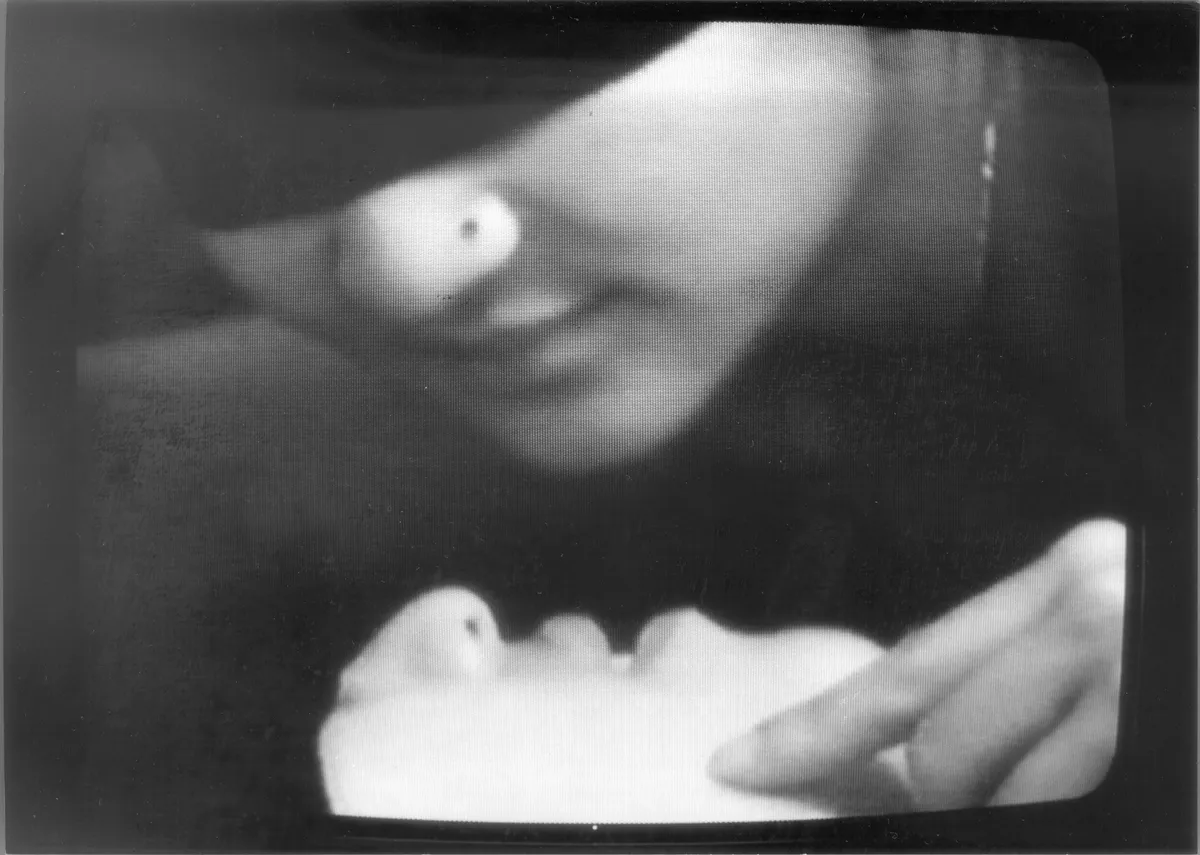After Image: The Blindness Series, dir. Tran T. Kim-Trang

And this is the way I do inhabit the non-visible; as a stretched-out mass onto which the layout of the world is to be placed to be remembered.
—Madeline Gins, Helen Keller or Arakawa
Perhaps, Sophie, you might some day return what you have taken, might some day undress your psyche in a room frequented by the blind, and let them run their fingers over your body as you have run your eyes over theirs.
Yours, Joseph
—Joseph Grigely, Postcards to Sophie Calle
The eight films in Tran T. Kim-Trang’s Blindness Series, which span over a decade from 1992 to 2006, flit like saccades of the eye from thought to thought, image to image. These are highly discursive, wandering essay-films, though all are motivated by a clarity of purpose outlined in the series’ prologue, aletheia (1992). In 16 minutes, Tran sketches out her intentions for the series, an inquiry into blindness and its associations with language, sound, tactility, memory, trauma, gender, the eye itself, (Asian) eyes as markers of difference, sight as sexual and institutional power, and the gaze as truth and witness — the conceptual scope is vast. In an artist’s statement, Tran lists another, less apparent motivation for committing to such an expansive project: a personal fear of vision loss. With this in mind, a palpable anxiety sets in while viewing the films. Just as Roland Barthes’ Camera Lucida arose from an obsession with death and the loss of his mother, the Blindness Series might be taken as an obsessive work, an attempt to shore up an archive of blindness against its unknowability.
Tran’s own depictions of blindness range from the mimetic to the analogical. In alexia (2000), about word blindness, the image is obliterated, the screen a blank white except for a disembodied finger moving over raised Dymo text. Sight appears only through the act of touching. ocularis (1997) surveils our surveillance culture, associating sighted society with coercive power, and blindness with an ultimate violation of consent: the inability to return the gaze of others, to protect one’s self. Over its end credits, we witness the 1993 gang murder of Lea Mek on a grainy surveillance tape, perhaps the most disturbing footage used in the series. He doesn’t see the gun that shoots him from behind. ekleipsis (1998), about Cambodian refugees with “hysterical blindness” (vision loss with no associated injury), combines both types of depiction in an ingenious structural conceit. Clips of the Khmer Rouge initially appear in flashes, separated by long intervals of black leader. Through voice-over, we learn of women who chose to go blind rather than let the atrocities of genocide assault their vision. The clips gradually grow longer, the intervals of black shorter, until a terrible history reappears. Is this a coming-to-terms for the audience, or was it better not to have seen?
These representations of a non-visual way of perceiving the world raised a troubling question upon my first viewing. In visually rendering the experience of blindness, what, if anything, do these films return to the blind? Tran is not a subject in any of the films, except the last, Epilogue: The Palpable Invisibility of Life (2006), which ponders the death of her mother and the birth of her son (she does appear in operculum (1993), but as a persona of an Asian woman seeking cosmetic eye surgery). Yet, I sensed an inescapable self-referentiality in the work. Derrida, a pervasive inspiration for Tran, might insist as much — “a drawing of the blind is a drawing of the blind” — artistic production is always a self-portrait. I began to think I wasn’t seeing blindness, only the artist’s fear of it. Perhaps this is too literal an interpretation of a series that is primarily a deconstruction of metaphors of disability. But, for me, metaphor is neither the most important or interesting thing about the Blindness Series. Its strongest films move away from fear and caged metaphors towards beauty, by approaching blindness directly, showing what it means to fully live and love after the loss of sight.
kore (1994) is the first film to achieve this effect. Two nude, blindfolded Asian women kiss, lick, and caress each other’s intertwined bodies; accompanying on-screen texts describe the subordination of female sexuality to the phallogocentric gaze. The blindfold becomes a tool of resistance, a purposeful self-blinding akin to the experience of the Cambodian refugees. The sensation of touch is privileged, and in its fullness translates sexual desire unhampered by vision. One of the women is an AIDS caseworker, Peou Lakhana. She explains that the blindfold may not be a choice for many AIDS sufferers, who must pay exorbitant drug prices or lose their vision to cytomegalovirus.
The second is amaurosis (2002), a documentary about the blind guitarist Dat Nguyen. Dat speaks confidently and proudly about his inner sense of beauty, and openly about the challenges of being a disabled performer. As a deaf percussionist, I found Dat’s story highly compelling. We both rely on proprioception to navigate the terrain of our instruments, the space of the sound around us. In this, the penultimate film of the series, Tran develops its most radical message: blindness remains unknown to us, the sighted, not because we cannot imagine losing our sight, but because we cannot imagine what we would gain from it. Halfway through the film, an educational video showing how the brain processes vision appears on screen. It seems laughably inadequate in comparison to Dat’s testimony. He speaks not of light, but its warmth. Not of the blue ocean, but the thunder of the sea.
Originally written to accompany My Sight is Lined with Visions, January 2021